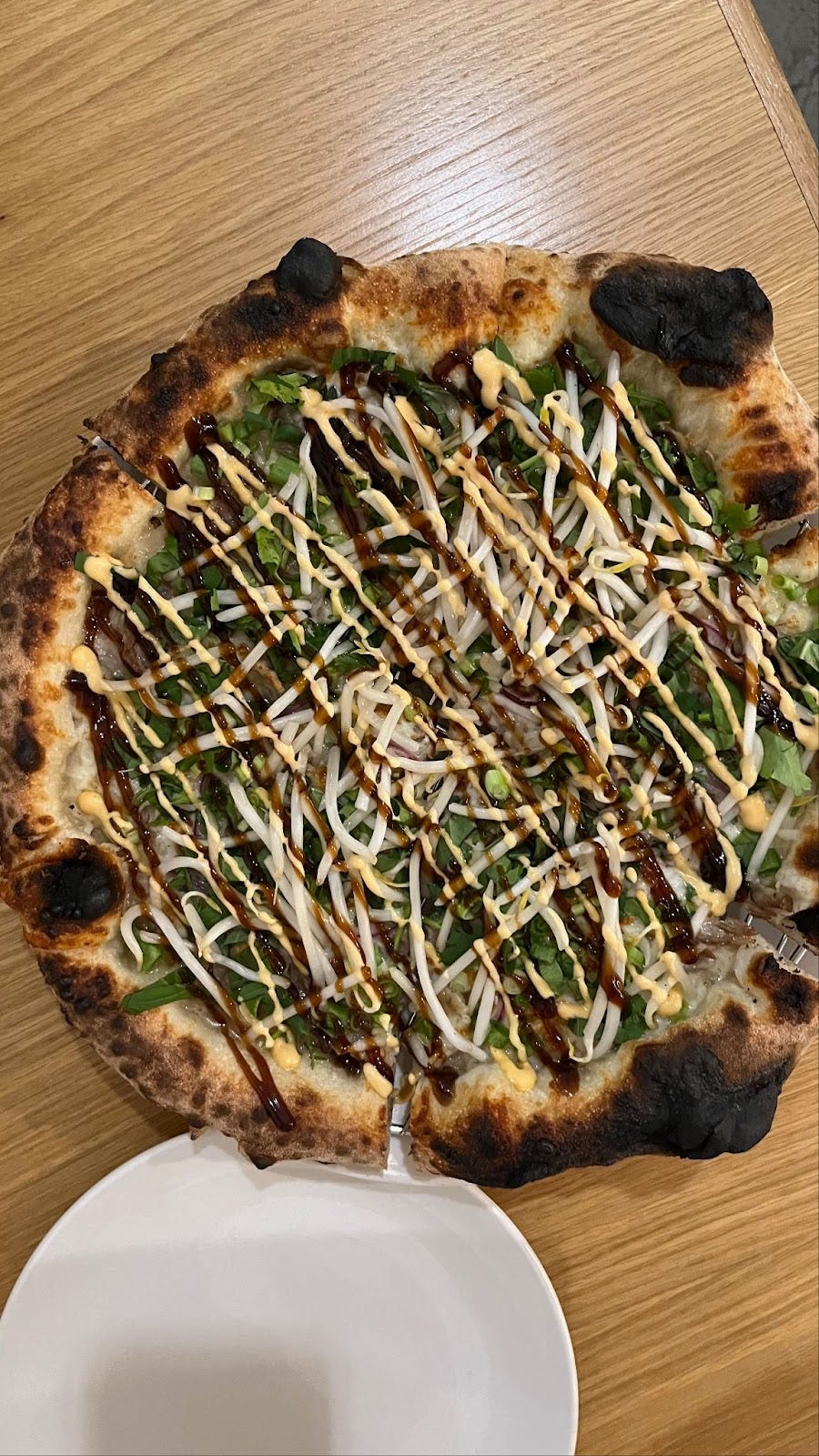Hapa Pizza and the dark side of good press
Whenever I saw a story about a business going viral, I used to get really excited for them.
I subscribe to a newsletter from OPB (Oregon Public Broadcasting) called Superabundant and in August, I read a feature about 3 Portland pizza places that had made a New York Times best list. Despite the article stating this restaurant was overwhelmed with new business, I wanted to visit.
I dined at Hapa Pizza in Beaverton, Oregon later that week. It’s a small business owned by Aaron and Natalie, a couple sharing food from their hearts. The word "hapa" refers to a mixed-race person of Asian and Pacific Islander descent, and the restaurant is a beautiful blend of both their personalities, life experiences, and cultures.
While I was there, I got chatting with Aaron since he was the runner that day and stationed next to our table. He shared the story of how their business had changed since being featured in the New York Times roundup of the best pizza places in the U.S. The review praised their creative take on pizza, saying, “The pies stay faithful to the Neapolitan canon of pleasingly charred and chewy dough, but also to vivid Asian flavors, as in the pho or Thai green curry pies. Mr. Truong manages to get a lot on his pizzas without them seeming gimmicky or overloaded.” I couldn’t agree more. I mean, Tom Yum Caesar Salad? Yes, please.
Initially, the feature was a dream come true for their restaurant. Sales skyrocketed, and there were lines out the door. And a huge increase in customers is great news for a small business, no?
It’s complicated. Hapa Pizza quickly became overwhelmed by the instant demand. They were so slammed with orders that it became difficult to manage. Worse, the online hype had created inflated expectations. People didn’t come in simply asking themselves, Do I like/love this pizza? Instead, they wondered, Is this pizza worthy of a New York Times list?
Anticipation set patrons up for disappointment. Some left over critical Google reviews complaining about how busy it was or the speed at which they received their meals.
I was there because of the media buzz, too. As I listened to Aaron talk about the struggles that had followed, I felt a pang of guilt. I was part of the problem that was overwhelming them. It made me pause and reflect on my own participation in the hype mobs that can unintentionally harm small businesses like this one. Lucky for us, now they’re used to it. They stopped taking delivery orders and are expanding into the space next door. From the looks of it, they’re adapting and figuring it out.
What about the pizza? Fantastic and unique. Of the pizzas we ordered, the pho pizza, which– despite its unconventional inspiration— tasted just. like. pho! It still blows my mind when I think about it. They serve their pizzas on a wire rack to keep the bottom from getting soggy, which is something I had never seen before and super thoughtful, especially for Neapolitan-style pizzas which have a classically soft dough. I had a great experience there and it was a privilege to hear about Hapa’s journey and future plans.
As I left with the rest of my fresh strawberry Thai iced tea in hand, I couldn’t shake the feeling that this experience was about more than just the pizza. I thought about how good press can be a blessing and a curse for small businesses like Hapa, and how easy it is for us to get swept up in the excitement without considering our impact. In the world of viral TikToks and trends, and small businesses (this includes my own), I want to be more mindful of the delicate balance between supporting a local gem and contributing to the pressures that could overwhelm it.







LOVE this one. So considerate and educational for a topic that’s super relevant regardless of if you live in a foodie city or not. I hope the owners at Hapa get a chance to see this one day!